It turns out you don’t need a chia pet after all!
There’s a whole wide world of hair like plants that are fun to grow and take care of. Just like people, these different types of plants produce a wide variety of mane-like looks, styles and textures.
Read through this long and tangled list and you just find a plant that matches your mop!
Andreana Air Plant (Tillandsia andreana)
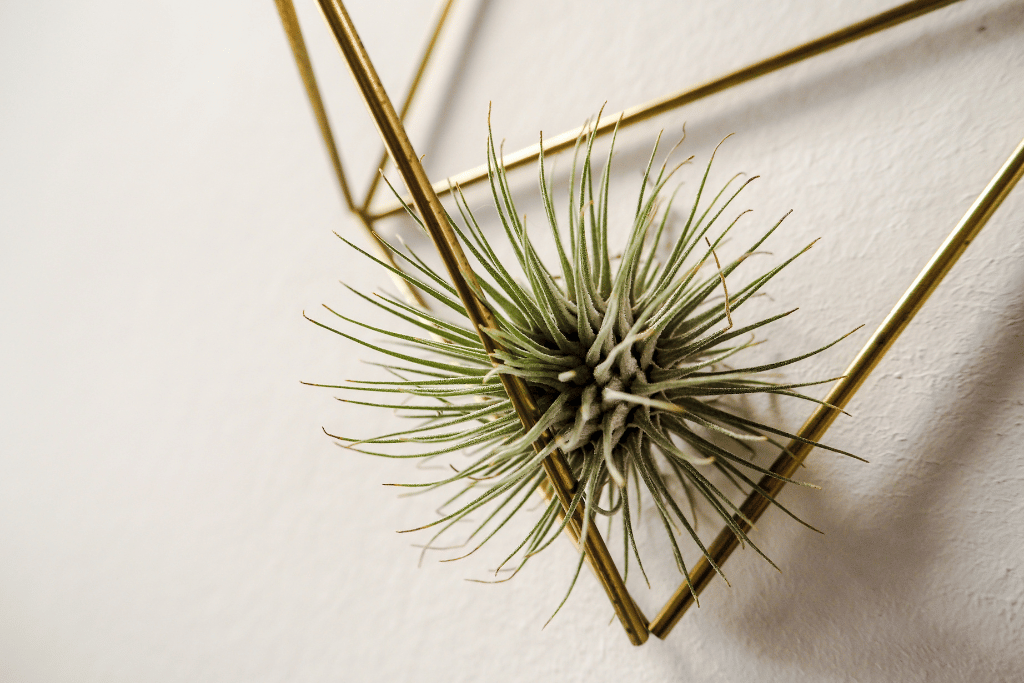
The fine, spiky leaves of Andreana air plants put on a showy display as they grow larger.
And if you look at it with the right eyes, the cluster of protruding spikes kind of looks like Bart Simpson’s hair! Maybe that’s a stretch but as I scrolled through pictures of this native Colombian plant my mind wandered to my favorite childhood cartoon.
The cluster quickly expands in size and is durable and low-maintenance, making it a great houseplant for gardeners of all levels. Enjoy the stunning green leaves and remember, when you see it blooming tiny red flowers, don’t have a cow man!
Spanish Moss (Tilandsia usneoides)
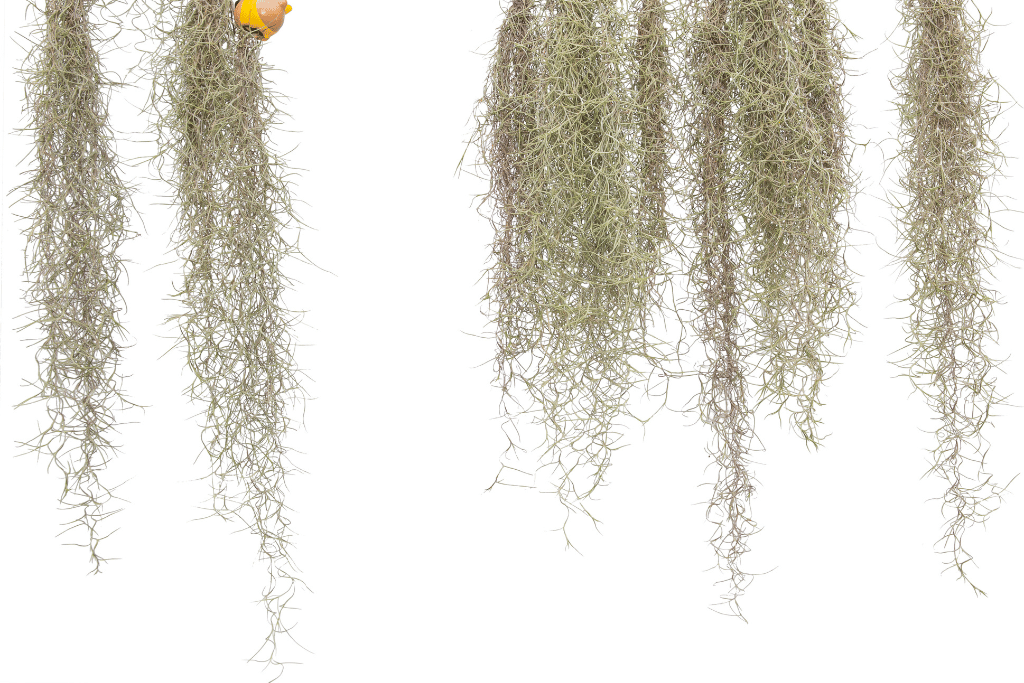
If you’re familiar with the southeast region of the United States then you’re well acquainted with this hairy invasive moss that is draped all over trees. Spanish moss looks a bit spooky, somewhat like a witch’s hair, but it still has a mysterious allure to it.
Spanish moss is native to Central and South America and qualifies as an epiphyte, meaning it survives without roots and survives by absorbing water and nutrients from the air. It is commonly mistaken as a parasite of the large oak and cypress it calls home. However, the moss does grow so thickly that it can damage health and inhibit the growth rate of the trees.
- Spanish moss is commonly kept in hanging baskets as a houseplant, growing happily in a confined container.
- Mist it on a weekly basis to keep the humidity levels high and shoot for a temperature in the range of 65-80 degrees.
Many orchid varieties, like Spanish moss, are epiphytes. They have highly evolved aerial roots that feed the plant through the moisture in the air. Visit Keyvan‘s page to get his expert advice on everything orchid and bonsai related.
Climbing Onion (Boweia volubilis)

What a strange plant the climbing onion is! The other-worldly bulb blasts up wispy foliage that resembles green whiskers. It’s a curious plant to grow that will absolutely add intrigue to your garden space or home.
Native to Africa and a relative to asparagus, the climbing onion is best kept as an ornamental fern-like plant.
- Provide plenty of light for the decorative foliage and make sure to keep the soil moist during the growing season.
- A succulent soil mix would be ideal for the large bulbs to stay well-drained.
- Keep the temperatures on the hot side to mimic their native environment.
Old Man Cactus (Cephaloceereus senilis)
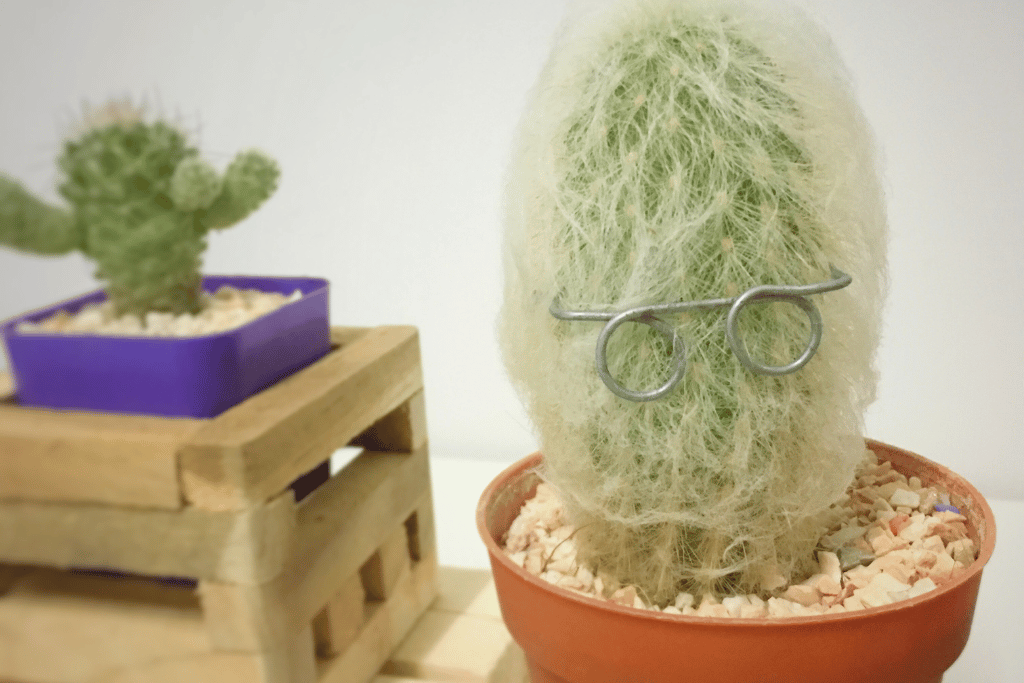
Without even having to look at it, the common name and Latin taxonomical name are a dead give away for the appearance of this peculiar cactus. The fuzzy gray hairs resemble those of an elderly person. And the cactus, completely covered in cobweb-like fuzz, reminds me of the creepy Cryptkeeper character.
Yikes!
However, if this woolly, old-timer look is appealing to you:
- Make sure that your old man cactus receives plenty of direct sun to encourage the growth of its hair.
- Water infrequently, only when the well-drained soil dries out.
Mistletoe Cactus (Rhipsalis baccifera)
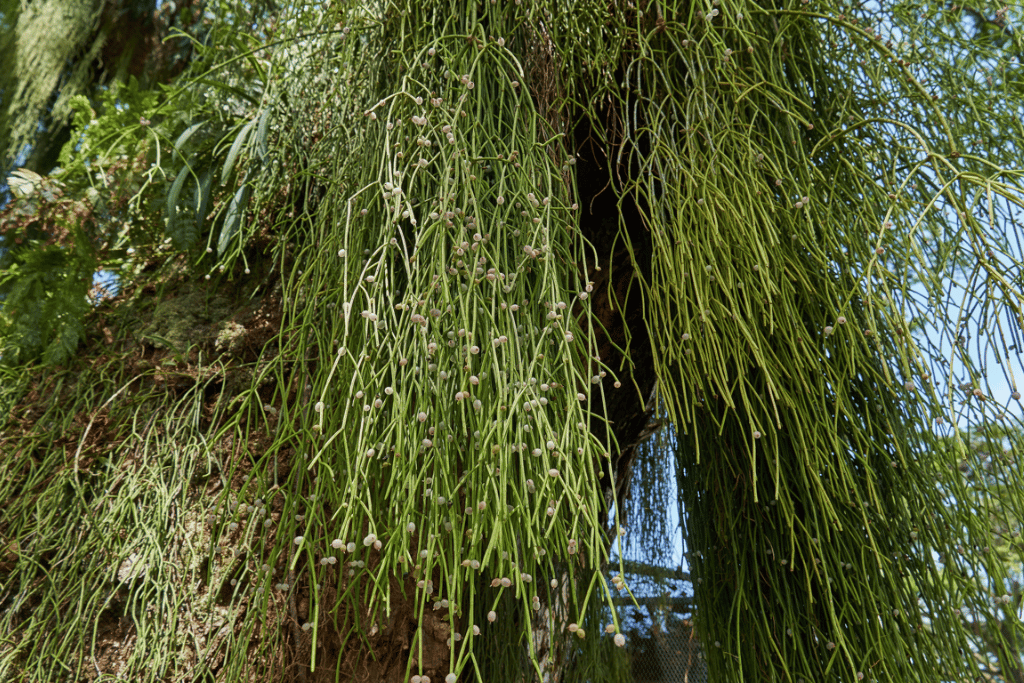
With a bunch of frayed foliage the mistletoe cactus doesn’t look like your typical cactus. The long, slender leaves are quite unique as they drape down and hang freely.
- Mistletoe cacti are tolerant of both high and low-light areas.
- Due to its epiphytic nature humidity levels should be kept high, ensuring the aerial roots can absorb enough moisture.
Corkscrew Rush (Juncus effusus ‘Spiralis’)
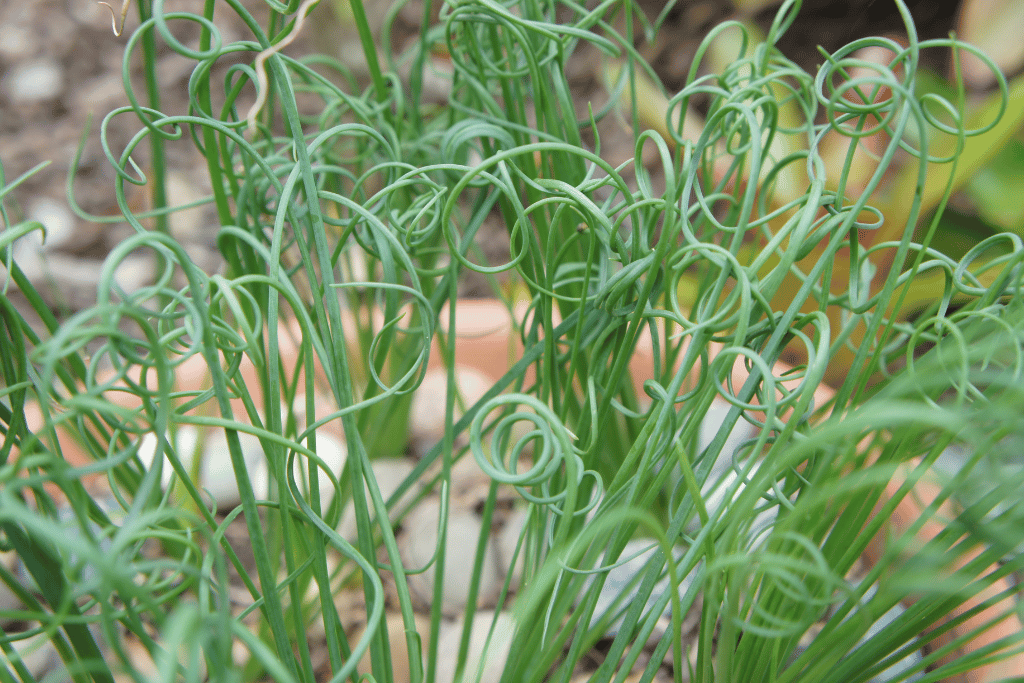
The corkscrew rush has curls that would make Shirley Temple jealous! The fine, hair-like leaves coil in an endless circular motion, making for an exceptionally unique display of foliage.
The springy perennial is native to Japan and also goes by Twister or Spiralis. Corkscrew rush makes a wonderful houseplant.
- Make sure they have exposure to full sun if you want to get the curliest and most colorful foliage. And they love water as much as the sun.
- Keep the soil moist at all times; Spiralis can even be planted in and around ponds and lakes.
- Temps around 65-80 degrees will suit them perfectly.
Dragon Tree (Dracaena marginata)
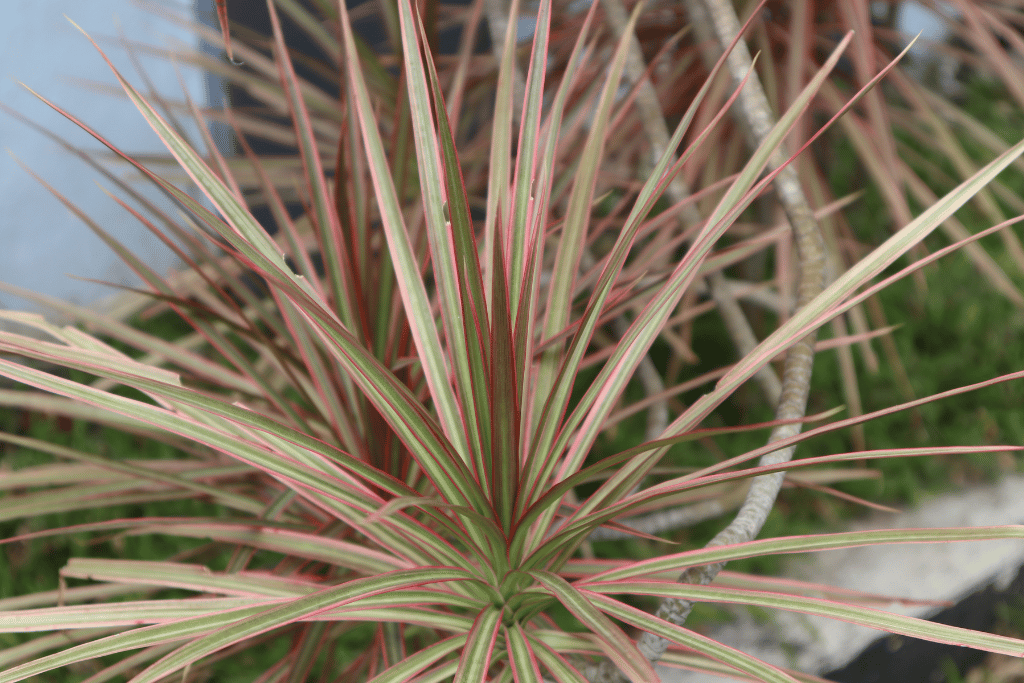
Commonly referred to as corn plant (though I much prefer the moniker dragon tree) this particular species of Draecana is a ginger! Well, not so much a carrot top because the slender, spine-like leaves showcase a beautiful crimson lining.
Like most Dracaena plants, dragon tree is popularly cultivated as a houseplant.
- Give it occasional waterings on a bi-weekly basis.
- Don’t let the soil stay sit damp for too long, it may lead to root rot.
- Bright, indirect light and well-drained soil are the best conditions for this tropical plant.
If you have a dragon plant (corn plant) that is dying, refer to this article to help understand why and how to correct the problem before it’s too late!
Wheat Grass (Triticum aestivum)

Popular as a superfood when juiced, wheatgrass can also be kept as a houseplant to freshen the air and perk up any spot in the home. And because it’s typically densely planted, a tray full of it can resemble a lush head of bright green hair!
- Make sure your wheatgrass gets plenty of bright indirect light and receives regular weekly waterings.
- Well-drained soil is important for avoiding rot from setting in among the densely planted grass.
Ponytail Palm (Beaucarnea recurvata)
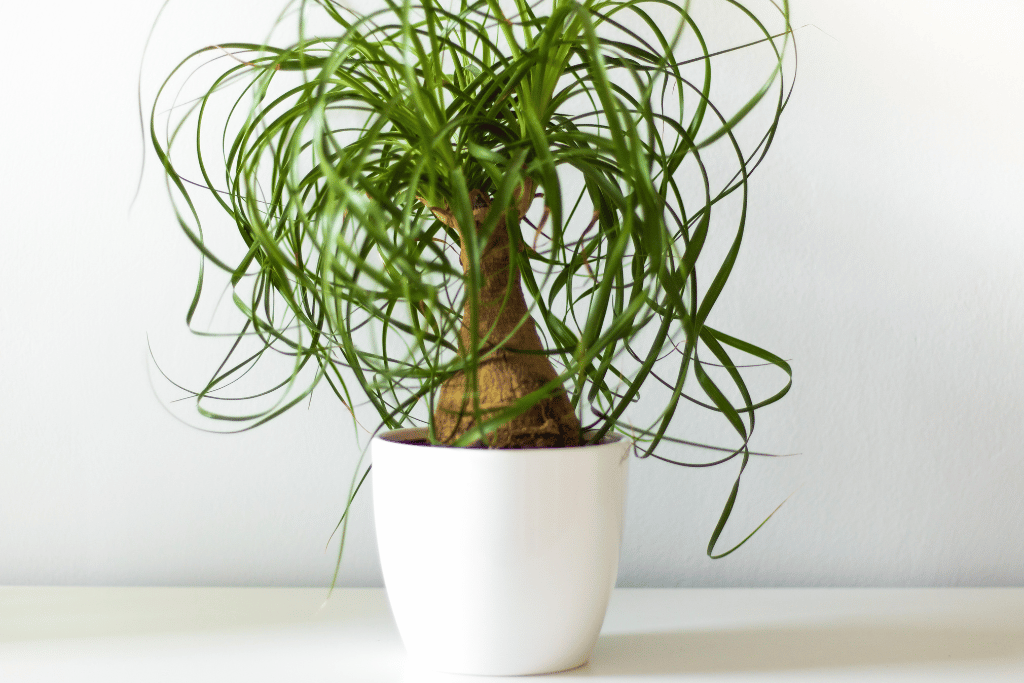
If you’re into 80’s hair bands, the ponytail palm is for you! The common name overtly hints at the growth habit that resembles a wild rockstar hairdo.
The dense trunk has the ability to produce long, frenzied strand-like leaves. Ponytail palm makes a great houseplant due to its low-maintenance requirements.
- The south Mexican native prefers long hours of bright indirect light and only occasional watering when the soil dries out.
- Use well-draining soil to keep the roots from sopping up too much moisture and maintain warm temps between 60-85 degrees.
Firecracker Plant (Russelia equisetiformis)
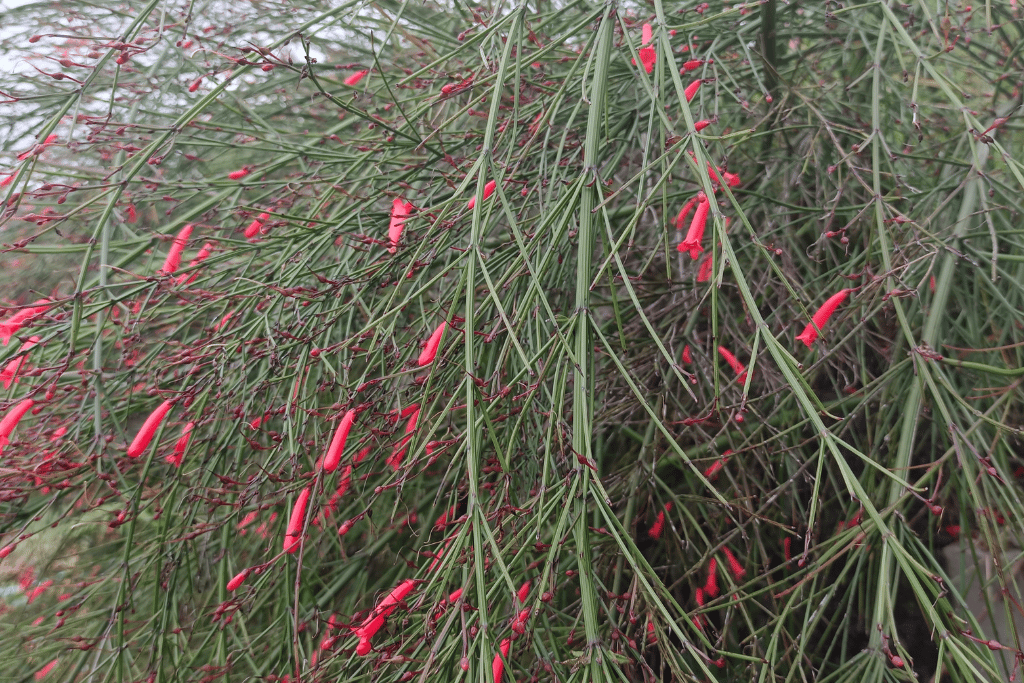
It’s obvious to see how this plant earned its explosive common name. Firecrackers are an apt description of the bountiful blossoms of tiny TNT sticks.
The oft-flowering Mexican native does however go by many other illustrative common names: Fountainbrush, firecracker fern, coral fountain, hummingbird plant and fountain plant.
- To maximize the bright red firecracker flowers keep your plant in a spot that receives full sun.
- Regular waterings are appropriate as long as the soil is allowed to dry out a bit in between.
- Use regular potting soil for planting but add in some coarse sand or perlite to improve drainage.
- Firecracker plant prefers temperatures from 65-75 degrees.
Old Man’s Beard (Usnea)
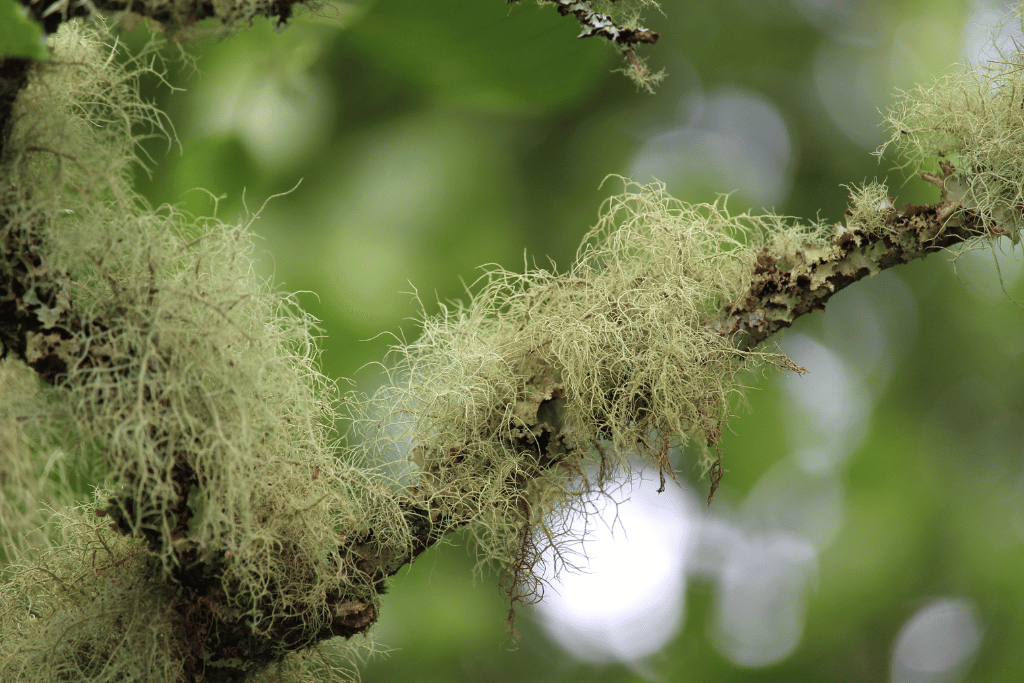
This relative of Spanish moss looks like a crusty old man’s beard, hence its common name. I apologize for the unappealing mental image, but you can’t deny the accurate description!
The lichen grows all around the world, thriving in a variety of climates and settings.
Variegated Spider Plant (Chlorophytum comosum ‘Bonnie’)

The perennial spider plant, native to South Africa, has blade like green curls that appear to have been touched up with blonde highlights. The light streak through the midsection of the leaf adds a lot of character and interest to the popular houseplant.
- Keep your Bonnie plant in bright indirect light to get the most from its attractive leaves and variegation.
- Maintain evenly moist soil during the growing season and pull back on the watering during winter.
- Ambient temperatures of 55-70 will have your spider plant growing happily year-round.
Sprouting from tubers, this variety of spider plant can easily be propagated by division; a great feature for indoor growers who love to share with friends.
Read more deelpy about Spider Plant Varieties.
Chain Cactus/Jumping Cholla (Cylindropuntia fulgida)
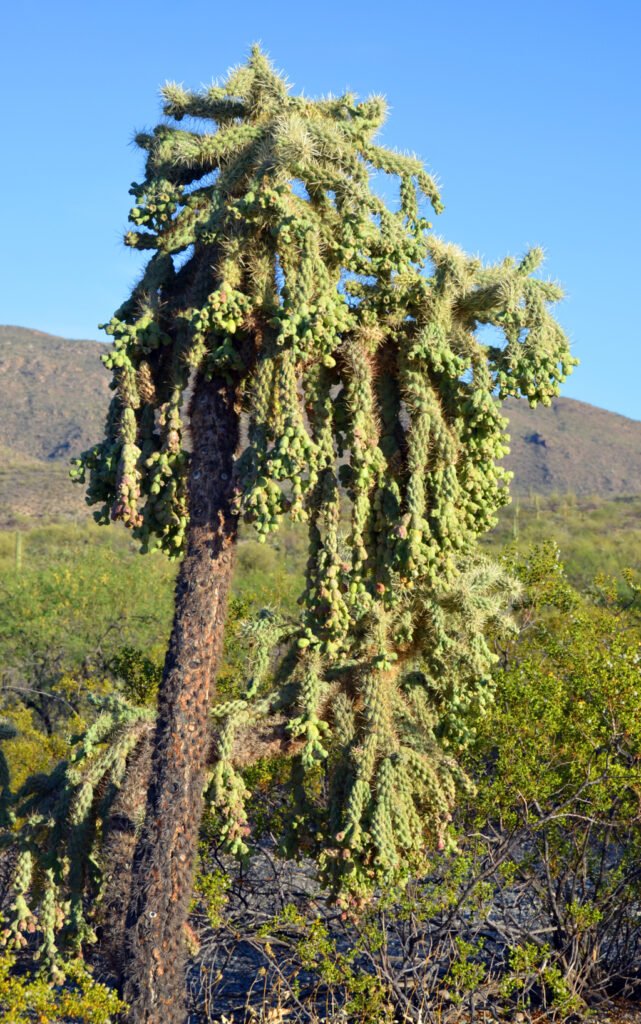
Resembling a long chain link or thick strands of hair, the jumping cholla cactus is native to the North American southwest. It’s an attractive plant to behold but beware of the large and small spines. They are known to be the most painful among cacti varieties. If you decide to keep a chain cholla cactus as a plant, the safest place for it might be outdoors!
- Bright indirect light is the best option for cholla cacti.
- They should be watered infrequently and thoroughly. Allow the soil to dry out completely in between waterings.
- The medium should be well-draining and cholla cacti will benefit from a little addition of fertilizer or compost from time to time.
- Avoid drastic swings in temperature, as this will stress out your cactus. Temps ranging from 65-75 degrees are ideal.
Read more about cholla cacti in this article about Is Cactus a Vegetable.
Hindu Rope Plant (Hoya carnosa ‘Compacta’)
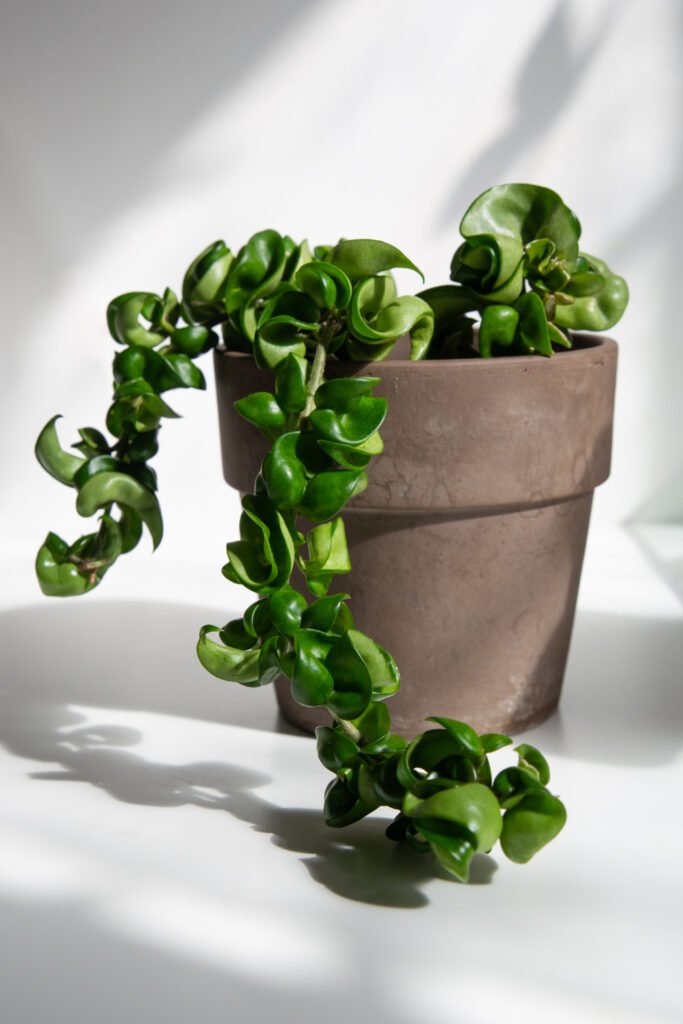
Hindu rope plant is an undeniably unique plant in appearance. To me, it resembles long locks of hair that have been treated with a curling iron, achieving a knotty, bouncy look. The thick fleshy leaves give it even more of a voluminous look.
- For the best growth, make sure Hindu rope plant gets bright indirect light for the majority of the day.
- Occasional watering when the soil dries out is sufficient.
- Hindu rope plants won’t be too fussy when it comes to soil and climate as long as it is well-drained and remains above 50 degrees.
Rat Tail Cactus (Aporactus flagelliformis)
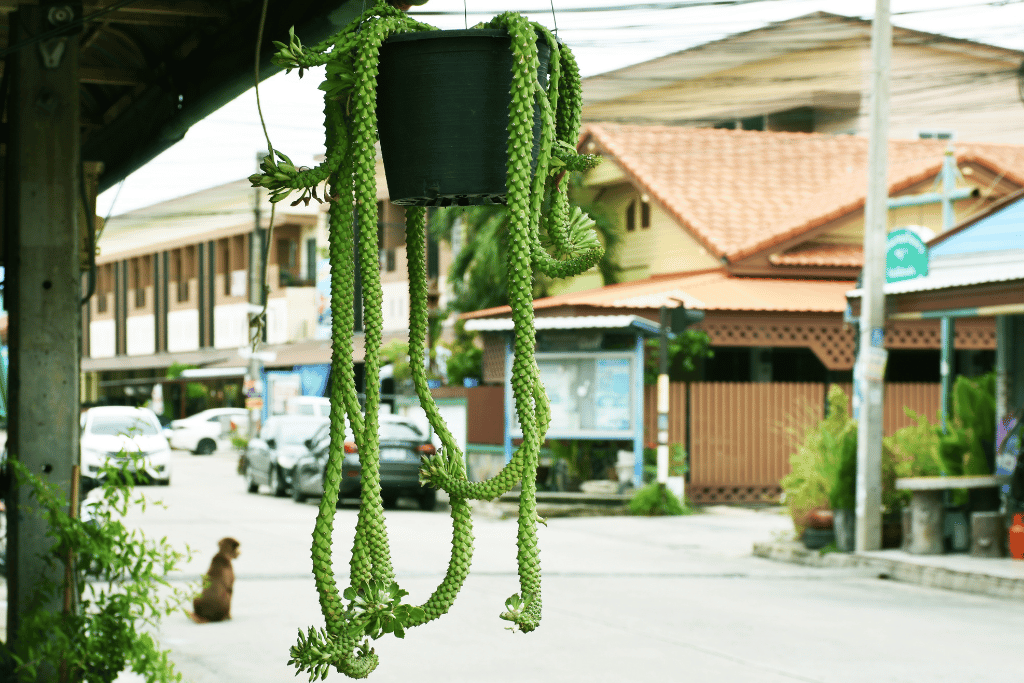
Certainly rat tail anything is not a flattering name. But we can easily see the resemblance to a rat tail. But for the purposes of this list and to get that creepy crawly image out of our heads, let’s imagine it as long, thick strands of braided hair. That’s much more appealing, isn’t it?
- This cactus variety will take as much sun as it can get, so be sure it receives full sun exposure.
- Regular waterings are appropriate through the hot months but should be significantly cut back during the winter.
- Well-draining soil is ideal.
- While the rat tail cactus prefers hot weather, it will tolerate temps down to 45 degrees.
Are you struggling to take care of your cactus? Is it looking weak or sickly with a deformed stalk and stems? It could be experiencing etiolation. Find out all you need to know about this common cactus affliction and how to swiftly address the issue..
Screw Pine (Pandanus tectorius)
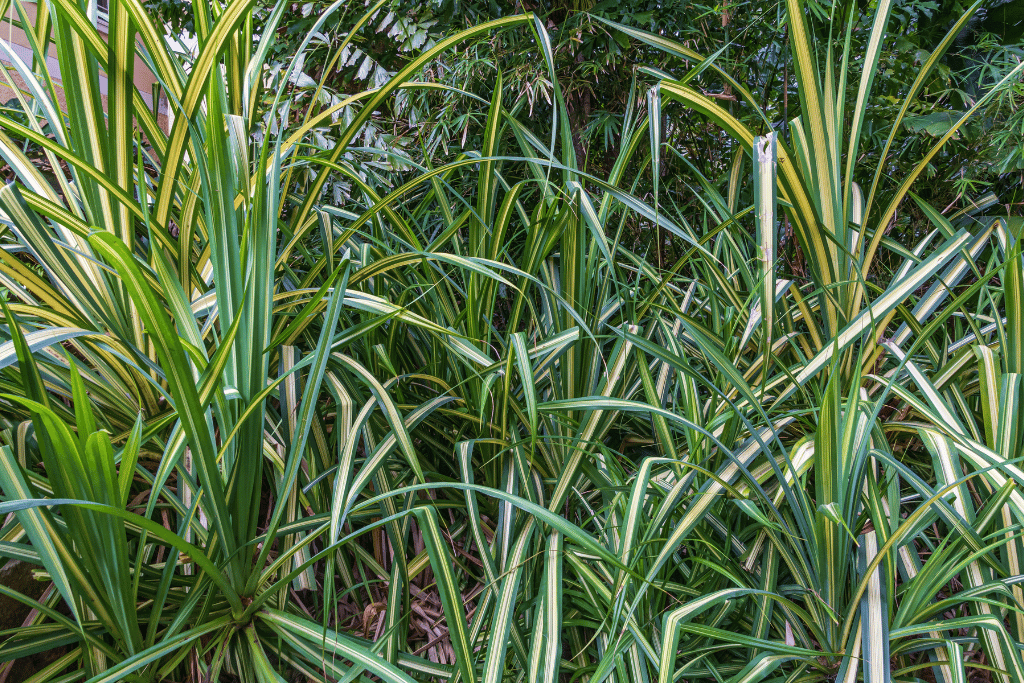
The spiky fronds of variegated leaves might remind you of hairstyles that came from the punk scene. The messy mass of leaves are all different lengths and shoot off in every direction. It’s a rebellious and entertaining plant to watch put on a show!
- Screw pines require filtered or indirect light, as direct sun may scorch the leaves and ruin the interesting variegated patterns.
- Keep the soil evenly moist without overwatering or letting it dry out.
- Rich, well-draining soil is the preference of screw pines, so consider mixing organic matter into the potting mix and incorporating a weekly fertilizing regimen during the growing season.
- Maintain temperatures between 65-80 degrees.
String of Pearls (Senecio rowleyanus)
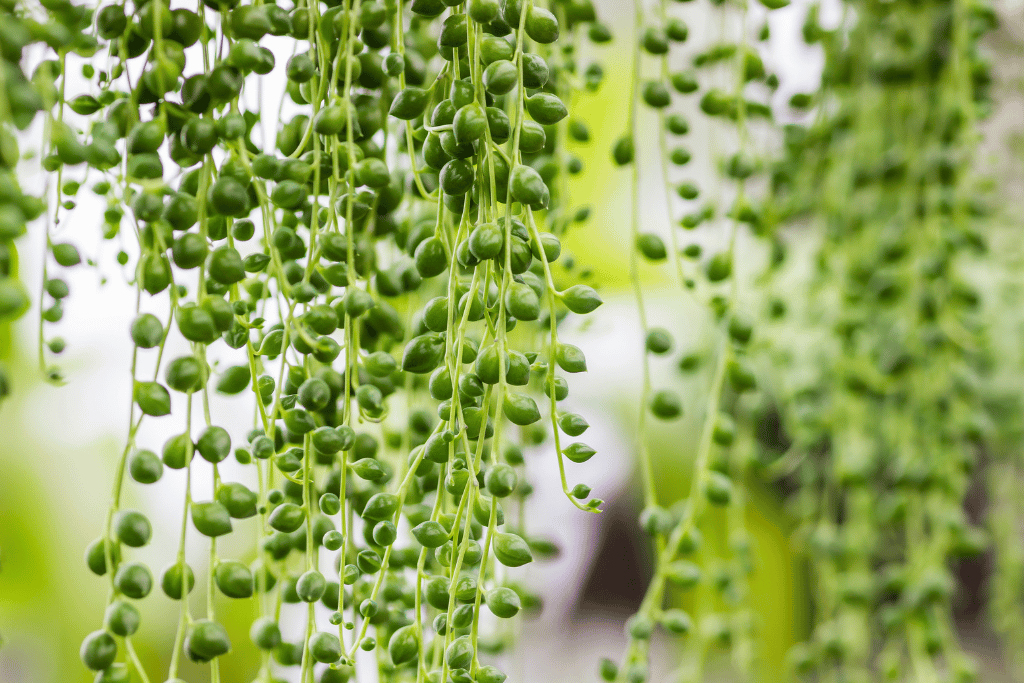
The perfectly named string of pearls plant is stunning to look at. The vine-like stems are studded with cylindrical buds resembling lengthy strands of beaded hair. String of pearls is native to South Africa and easy to propagate and maintain.
- Make sure your string of pearls receives direct sun at some point throughout the day.
- Water when the soil feels dry. It’s drought-tolerant but struggles with damp roots.
- Provide well-draining soil and a hot temperature above 70 degrees to keep string of pearls growing happily.
String of pearls, among other plants in this list, will grow great in a west-facing window.
Chia Plant
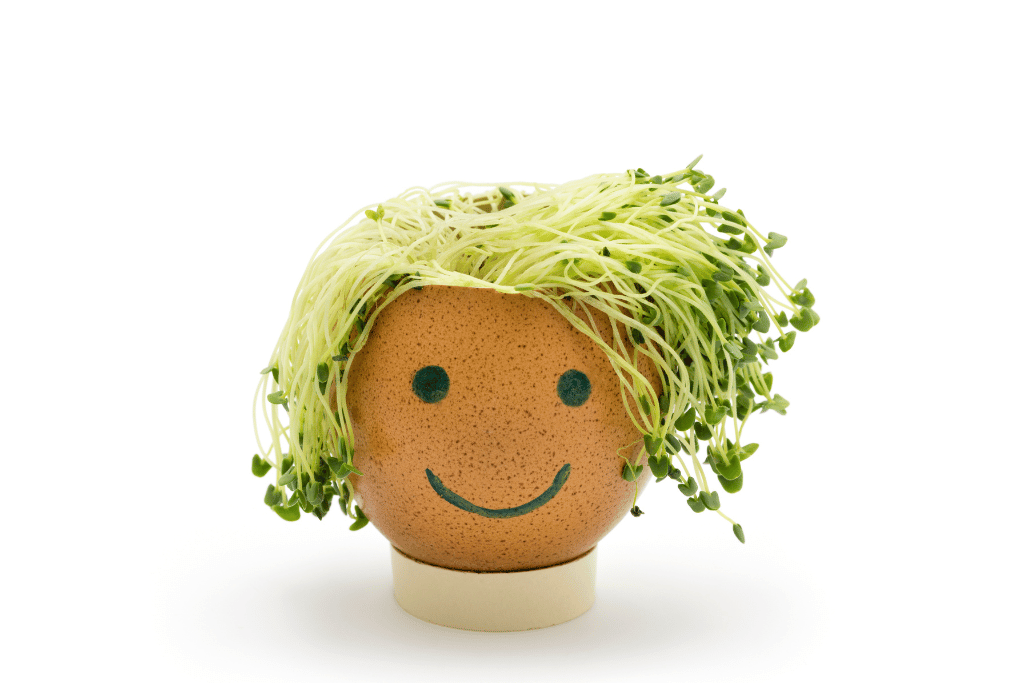
I just had to include the classic hair-like plant!
Who else remembers the Chia Pet infomercials? Cha- cha- cha- chia!
The chia pet is such a novel idea. Without the need for soil, chia seeds are sprouted on terracotta figures that look like human heads or are in the shape of animals.
Not only are they fun and entertaining to watch grow, but the sprouts can also be consumed as a healthy microgreen once they get big enough to trim!
Talk about getting a heads-up on your health!
Final Thoughts on a Long List of Foliar Flows
From curls to spikes and long braids to scraggly beards, I think we’ve well covered the spectrum of plants that look like hair. Included with most plants on the list are a few care instructions, so pick out a hair-do that speaks to you, and happy styling!



